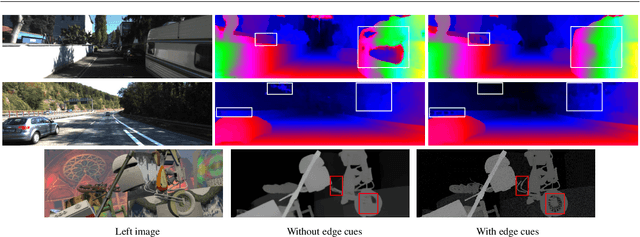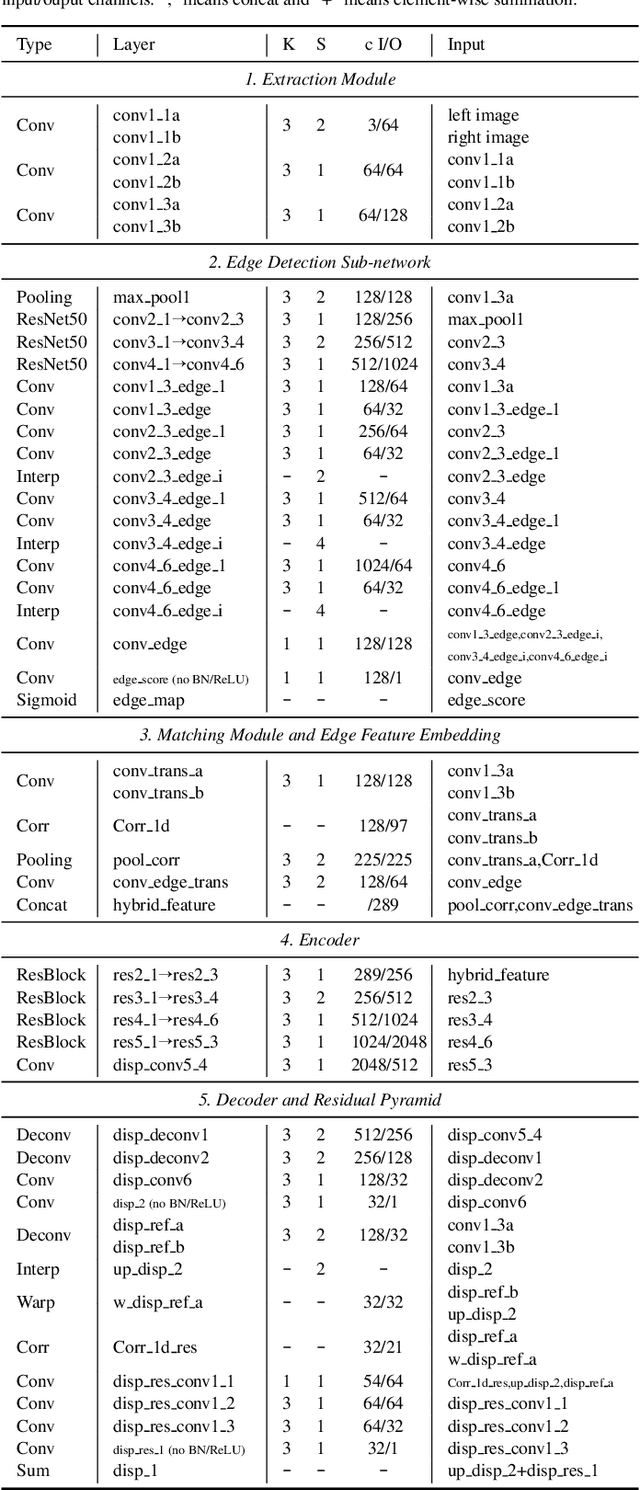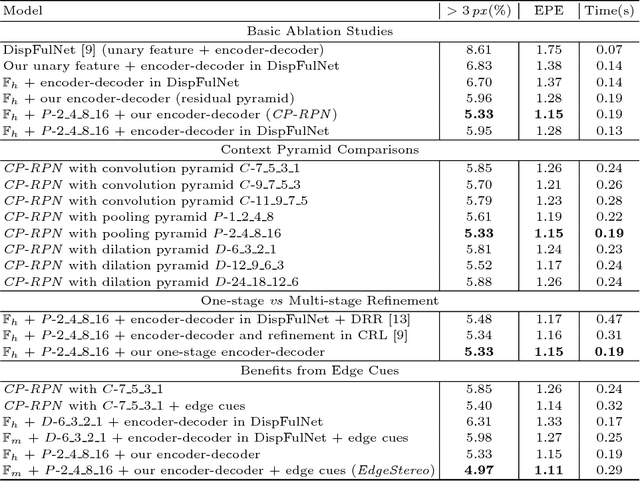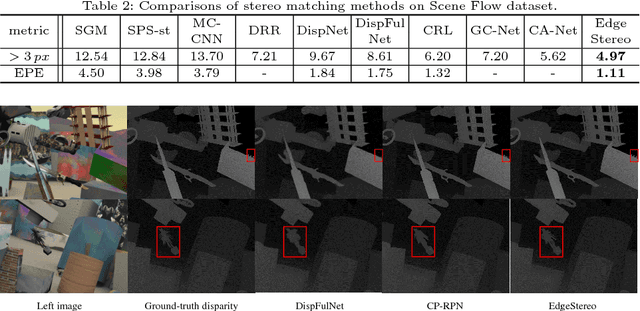Hanwen Hu
EdgeStereo: An Effective Multi-Task Learning Network for Stereo Matching and Edge Detection
Mar 05, 2019



Abstract:Recently, leveraging on the development of end-to-end convolutional neural networks, deep stereo matching networks achieve remarkable performance far exceeding traditional approaches. However, state-of-the-art stereo methods still have difficulties finding correct correspondences in texture-less regions, detailed structures, small objects and near boundaries, which could be alleviated by geometric clues such as edge contours and corresponding constraints. To improve the quality of disparity estimates in these challenging areas, we propose an effective multi-task learning network EdgeStereo composed of a disparity estimation sub-network and an edge detection sub-network, which enables end-to-end predictions of both disparity map and edge map. To effectively incorporates edge cues, we propose the edge-aware smoothness loss and edge feature embedding for inter-task interactions. It is demonstrated that based on our unified model, edge detection task and stereo matching task can promote each other. In addition, we design a compact module called residual pyramid to replace the commonly-used multi-stage cascaded structures or 3-D convolution based regularization modules in current stereo matching networks. By the time of the paper submission, EdgeStereo achieves state-of-the-art performance on the FlyingThings3D dataset, KITTI 2012 and KITTI 2015 stereo benchmarks, outperforming other published stereo matching methods by a noteworthy margin. EdgeStereo also has a better generalization capability for disparity estimation because of the incorporation of edge cues.
EdgeStereo: A Context Integrated Residual Pyramid Network for Stereo Matching
Sep 23, 2018



Abstract:Recent convolutional neural networks, especially end-to-end disparity estimation models, achieve remarkable performance on stereo matching task. However, existed methods, even with the complicated cascade structure, may fail in the regions of non-textures, boundaries and tiny details. Focus on these problems, we propose a multi-task network EdgeStereo that is composed of a backbone disparity network and an edge sub-network. Given a binocular image pair, our model enables end-to-end prediction of both disparity map and edge map. Basically, we design a context pyramid to encode multi-scale context information in disparity branch, followed by a compact residual pyramid for cascaded refinement. To further preserve subtle details, our EdgeStereo model integrates edge cues by feature embedding and edge-aware smoothness loss regularization. Comparative results demonstrates that stereo matching and edge detection can help each other in the unified model. Furthermore, our method achieves state-of-art performance on both KITTI Stereo and Scene Flow benchmarks, which proves the effectiveness of our design.
 Add to Chrome
Add to Chrome Add to Firefox
Add to Firefox Add to Edge
Add to Edge